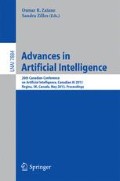Abstract
In the 20th century, genetic scientists anticipated that shortly after availability of the whole-genome profiling technologies, the patterns of complex diseases would be decoded easily. However, we recently found it extremely difficult to predict women’s susceptibility to breast cancer based on their germline genomic profiles and achieved an accuracy of 59.55% over the baseline of 51.52% after applying a wide variety of biologically-naïve and biologically-informed feature selection and supervised learning methods. By contrast, in a separate study, we showed that we can utilize these genomic profiles to accurately predict ancestral origins of individuals. While there are biomedical explanations of accurate predictability of an individual’s ancestral roots and poor predictability of her susceptibility to breast cancer, my research attempts to utilize the computational learning theory framework to explain what concepts are learnable, based on the three common characteristics of biomedical datasets: the high dimensionality, the label heterogeneity, and the noise.
Access this chapter
Tax calculation will be finalised at checkout
Purchases are for personal use only
Preview
Unable to display preview. Download preview PDF.
References
Collins, F.S., Morgan, M., Patrinos, A.: The human genome project: Lessons from large-scale biology. Science 300, 286–290 (2003)
Wright, A., Hastie, N.: Genes and Common Diseases. Cambridge University Press, New York (2007)
Hastie, T., Tibshirani, R., Friedman, J.: The elements of statistical learning: Data mining, inference, and prediction, 2nd edn. Springer, New York (2009)
Hajiloo, M., Damavandi, B., Hooshsadat, M., Sangi, F., Cass, C.E., Mackey, J., Greiner, R., Damaraju, S.: Using genome wide single nucleotide polymorphism data to learn a model for breast cancer prediction. BMC Bioinformatics (in press)
Hajiloo, M., Sapkota, Y., Mackey, J.R., Robson, P., Greiner, R., Damaraju, S.: ETHNOPRED: A novel machine learning method for accurate continental and sub-continental ancestry identification and population stratification correction. BMC Bioinformatics 14(1), 61 (2013)
Valiant, L.G.: A theory of learnable. Communications of the ACM 27, 1134–1142 (1984)
Vapnik, V., Chervonenkis, A.: On the uniform convergence of relative frequencies of events to their probabilities. Theory of Probability and its Applications 16(2), 264–280 (1971)
Bertucci, F., Birnbaum, D.: Reasons for breast cancer heterogeneity. Journal of Biology 7(2), 6 (2008)
Author information
Authors and Affiliations
Editor information
Editors and Affiliations
Rights and permissions
Copyright information
© 2013 Springer-Verlag Berlin Heidelberg
About this paper
Cite this paper
Hajiloo, M. (2013). Learning Disease Patterns from High-Throughput Genomic Profiles: Why Is It So Challenging?. In: Zaïane, O.R., Zilles, S. (eds) Advances in Artificial Intelligence. Canadian AI 2013. Lecture Notes in Computer Science(), vol 7884. Springer, Berlin, Heidelberg. https://doi.org/10.1007/978-3-642-38457-8_34
Download citation
DOI: https://doi.org/10.1007/978-3-642-38457-8_34
Publisher Name: Springer, Berlin, Heidelberg
Print ISBN: 978-3-642-38456-1
Online ISBN: 978-3-642-38457-8
eBook Packages: Computer ScienceComputer Science (R0)

